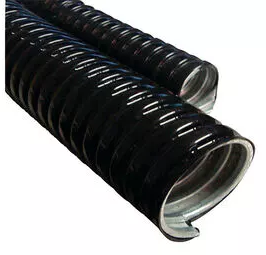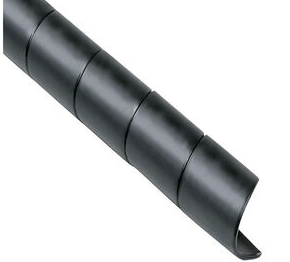What products are involved?
SRV, SRD, DVM, DVP, SME-TR/TRD.
Visit Rheonics product page: https://rheonics.com/products/Protecting conductors and cables from damage is essential whenever you work with them. To prevent unnecessary strain on them, either inside or outside of an enclosure, ensure that they are not over-bent, pulled, or tugged.
Cables and wires can be tensioned in a variety of ways. One of the most effective methods is electrical strain relief fittings, or "bushing". These are designed to provide protection and reduce tension on cables. A bushing can be made from a variety of materials including stainless steel, plastic, and rubber.
Depending on your application, some bushings may have threaded ends while others may have open ends, which allow for cable slack. The design of the bushing and the material used to make it will depend on the protection needs and the type of cable being used.
Cables can be completely protected with protective sheaths. Their unique properties include extreme flexibility, corrosion resistance, and self-extinguishing abilities. In addition to providing protection against dirt and humidity, protective sheaths may have to withstand high temperatures in some applications.

When using a Rheonics Sensor, be sure to select a bushing that will fit the cable properly and provide protection from pulling tension. Using a high-quality bushing can help ensure that your cables remain safe and secure for many years to come. Proper protection is essential when it comes to keeping your electronics functioning at their best.
1. Cable protection: What do you need to know?Using cable protection prevents accidents such as electrocution, tripping, and entanglement from occurring. Moreover, it also helps to protect the cables from damage and wear, thereby extending the life span of the cables. Good protection of electrical conductors is essential from both a human and equipment safety perspective!
For cable protection, there are a variety of cable accessories available, such as:
Cable glands - straight/brassThe spiral construction of conduits allows their ends to be sharp enough to cut through conductor insulation. Electrical shorts can be prevented by using internal wire strain relief. This fits around the conductors and slides into the flexible conduit. Next, the conduit is inserted into a connector attached to a conduit junction box or electric cable enclosure.

Instead, it is recommended to use either a metal alloy or plastic cable strain relief grip based on the environment. You can choose between straight or angled strain relief grips for electrical cables.
Pulling force is not always protected by cable strain reliefs. In contrast, they allow cable passage through holes in furniture, enclosures, and other surfaces without damaging cables or devices.

Cable conduitsCables are enclosed, supported, and protected by conduit. For cables, you can get rigid conduits or flexible plastic conduits.
Conduit is often made from flexible sheaths reinforced by rigid materials such as metal. The grounding and bonding properties of this type of cable conduit minimize electromagnetic interference and block emissions from the power cables it houses. Some options give you flexibility when choosing a conduit with a metal base. This type of conduit is usually used for general factory wiring and machine connections.

Protective metal conduits are used for cable protection, they can be used in several applications, and depending on the specifications they are designed weatherproof, watertight, widely resistant to seawater, acids, and oil but also very flexible.

Synthetic protective conduit can also be found, some examples use polyurethane jackets which are extremely flexible airtight, and liquid-proof with high tenacity and abrasion resistance.

Plastic cable conduit is an alternative. For electrical cables, PVC conduit is highly flexible, accommodating bends as needed. As a result of its high impact strength, it can be quickly recovered if crushed.

Cable wrapsBundling cables with cable wrap and cable sleeves keeps them organized and protected. They differ in materials and the ease with which cables can be accessed.
Spiral wrap is a type of cable wrap that is made of a flexible material that can be cut along its length. This allows you to wrap the cable bundle in a continuous spiral, which can be easily customized to fit your specific needs. The spiral wrap is secured with a fastener or adhesive, and it provides a neat and secure way to bundle and organize cables.

2. Installation examples


 Figure 11. Installation of inline density meter and viscometer - SME-TRD with Zener barriers,sensor cable is protected with Metallic conduit.
Figure 11. Installation of inline density meter and viscometer - SME-TRD with Zener barriers,sensor cable is protected with Metallic conduit.
References:
[1]  Protection sleeve by Brevetti Stendalto | DirectIndustry
Protection sleeve by Brevetti Stendalto | DirectIndustry
[2]  Brass cable gland, reduced sealing insert
Brass cable gland, reduced sealing insert
[3]  A guide to cable strain relief
A guide to cable strain relief
[5]Protective metal and synthetic conduits
Recommended articles:
3.  SRV Installation and Operation Manual
SRV Installation and Operation Manual
4.  SME-TR(D) Transmitter housing bracket installation instructions
SME-TR(D) Transmitter housing bracket installation instructions
DISCLAIMER
Pictures, photos, and images used are for illustration purposes and do not constitute any warranty or assertions on the suitability of use and should not be construed as an explicit or implicit recommendation or endorsement. All illustrations are given proper credit from our source of access and by their use here we do not specify or establish any copyright which belongs and stays unaffected with the existing copyright holder of that material




